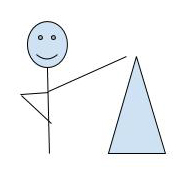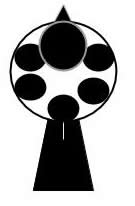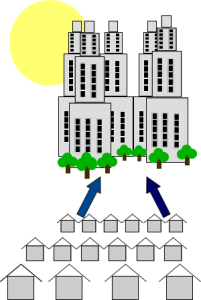Everyone has heard “a picture is worth a thousand words”. What does that really mean?
- Is a picture able to more fully describe a situation?
- Can shapes more accurately convey the meaning?
The answer is yes and no. A picture is worth a thousand words because it can be interpreted in so many different ways. Each person sees a picture and adds their own experience, their relationship to color, and their own interpretation of the shapes to come up with a unique meaning. Think back to any discussion around a painting on the wall and what it means. Very rarely do all people in the room agree.
The act of drawing and interpreting the images engages our brains in ways that can’t be done with the written word. This engagement actually has a name, it’s called synaesthesia. It means stimulating one area will create an automatic response in other areas. Drawings and pictures are proven to do this.
If you are looking for accuracy the written word is the way to go. With writing, there is the ability to clearly and succinctly describe the meaning and actions expected in a way that is impossible with shapes and images. But with the clarity, you lose the imagination.
When we draw, we get the benefit of engaging our brains in different and multiple ways, and pictures can allow us to effectively communicate complex sets of activities or words simplistically. This makes it much more likely we can grasp the big picture and avoid getting caught up in the details.
The takeaway from all of this is to use both. But when you are at the more creative brainstorming stage, work with illustration, and when you’ve had the discussions and made the decisions, then it is time to write it down.
The next strategy session.
How do you bring strategic illustration into your next strategy session?
Keep it simple.
Open with a discussion of why illustration is useful and the possibilities offered.
Make sure you have the materials on hand to allow everyone to contribute.
Put your audience at ease. The session is not about discovering the next Rembrandt. The drawings use simple symbols and diagrams to represent the complex problems.
The lack of drawing ability is actually an advantage. With strategic illustration: Less IS MORE! We want to stimulate the imagination and promote engagement. Symbols are actually more effective at doing this than a detailed sketch.
The goal with strategic illustration is to draw things that are open to interpretation, get the imagination working, and stimulate discussion.
Consider:

What does it mean?
It is undefined, but it does spark the imagination. The point is, drawings do not have to be complicated, realistic or even all that good to have the desired effect. Get people talking, moving, engaged. Make sure that the materials are in place to easily make changes to drawings, make use of multiple colors, and don’t be afraid to throw it all out and start over.

Killers to Strategic Development
- Lack of engagement
- Lack of Interaction
The point of illustration is improving engagement and interaction.
A simple example
The mission statement might be:
We want to drive economic development through small business development.
Could be illustrated like:

So is the illustration perfect? Does it convey the mission statement exactly? The answer is no. But it does engage your imagination to wonder how it could be improved and what is missing. What is a small business? How is a small business defined to drive economic growth? I’m sure you can come up with many more questions and ideas and this is the point.
You can see the drawings referenced in this article are simple and could be done by anyone that can draw a circle or a square.
At the next strategic development session, try shaking it up and move away from all the texts and finanacials. Pull out the white board, break out the colored pens and get everyone to the board.
Have fun creating your strategy.
Keep it simple.
If you would like more information on strategic illustration see the book. Picture your business strategy.
Learn how to incorporate strategic illustration into your strategic planning sessions.
